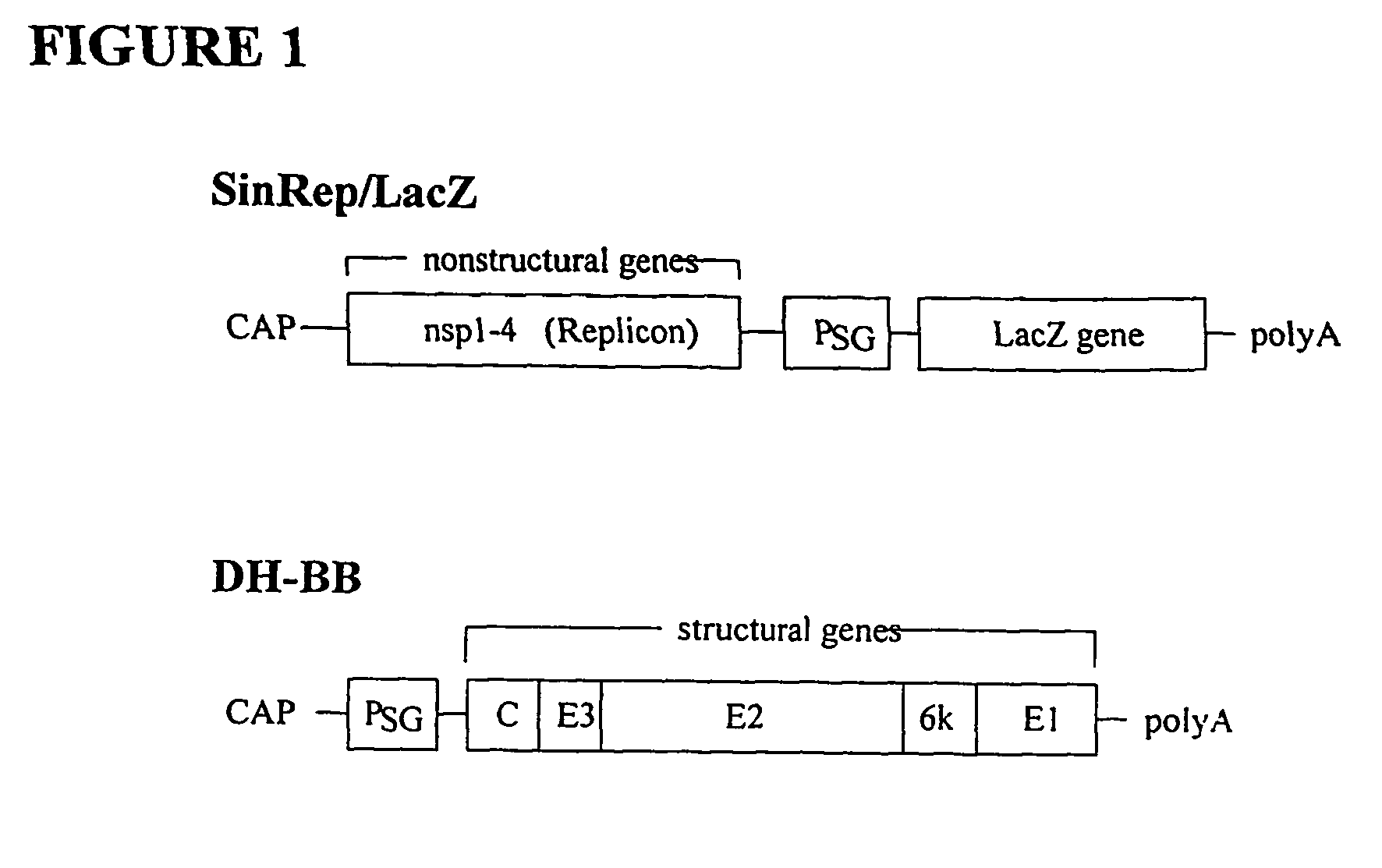Tumor therapy with alphavirus-based and high affinity laminin receptor-targeted vectors
a technology of alphavirus and laminin receptor, which is applied in the field of tumor therapy with alphavirus-based and high affinity laminin receptor-targeted vectors, can solve the problems of limited in vivo application, toxicity to patients, and limitations of all applications
- Summary
- Abstract
- Description
- Claims
- Application Information
AI Technical Summary
Benefits of technology
Problems solved by technology
Method used
Image
Examples
example 1
Sindbis Vectors Mediate Potent Anti-Tumor Activity
Materials and Methods
[0108]Cell Lines
[0109]Baby hamster kidney (BHK-21, ATCC Accession No. CCL-10) and ovarian carcinoma (ES-2, ATCC Accession No. CRL-1978) cells were obtained from the American Type Culture Collection (ATCC, Manassas, Va.) and maintained in minimum essential α-modified media (αMEM, JRH Bioscience, Lenexa, Kans.) supplemented with 5% fetal bovine serum (FBS, Gemini Bioproducts, Inc., Calabasas, Calif.). A human hepatocellular carcinoma cell line HuH7 was obtained from Dr. H. Yamamoto (Hyogo College of Medicine, Japan) and maintained in Dulbecco's modified Eagle's medium (DMEM, JRH Bioscience, Lenexa, Kans.) supplemented with 10% FBS. HT29 human colorectal adenocarcinoma cells (ATCC Accession No. HTB-38) were obtained from the ATCC and maintained in McCoy's 5A medium (Iwakata & Grace modification, Mediatech, Inc, Herndon, Va.) with 10% FBS. CFPAC-1 pancreatic cancer cells (ATCC Accession No. CRL-1918), SKOV-3 ovarian ...
example 2
Use of Sindbis Vectors to Treat Human Tumors
[0154]Replication defective Sindbis virus-based vectors SinRep / LacZ and SinRep / IL 12 are prepared as described in Example 1 and administered intravenously (approximately 500 μl of vector formulation containing 107CFU / ml) to patients having advanced (metastatic) melanomas, or advanced (metastatic) tumors of kidney, brain, colon, prostate, liver, pancreas, bladder, lungs, or ovaries. Treatment is performed 5 times per week for three or more weeks. The size of tumors is constantly monitored by MRI and CAT scanning, followed (when possible) by histological analysis of tumor necrosis and biopsy assays for the metastatic behavior of tumor cells.
[0155]The present invention is not to be limited in scope by the specific embodiments described herein. Indeed, various modifications of the invention in addition to those described herein will become apparent to those skilled in the art from the foregoing description and the accompanying figures. Such mo...
PUM
| Property | Measurement | Unit |
|---|---|---|
| Affinity | aaaaa | aaaaa |
Abstract
Description
Claims
Application Information
 Login to View More
Login to View More - R&D
- Intellectual Property
- Life Sciences
- Materials
- Tech Scout
- Unparalleled Data Quality
- Higher Quality Content
- 60% Fewer Hallucinations
Browse by: Latest US Patents, China's latest patents, Technical Efficacy Thesaurus, Application Domain, Technology Topic, Popular Technical Reports.
© 2025 PatSnap. All rights reserved.Legal|Privacy policy|Modern Slavery Act Transparency Statement|Sitemap|About US| Contact US: help@patsnap.com

